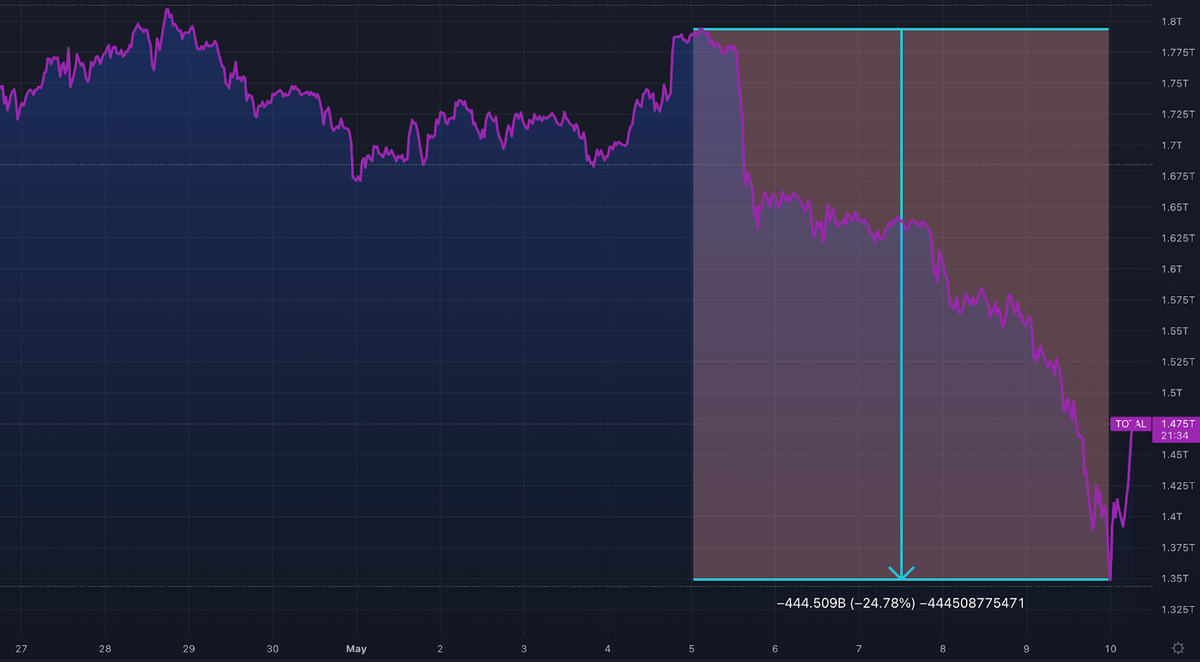The Derivatives Magazine #1

Last week was full of both macroeconomic events and local crypto news. The traders’ main focus was on Wednesday’s Federal Reserve meeting. Fed Chair Jerome Powell made some encouraging remarks at the earnings call – a one-time 0.75% hike is off the table (though 60% of traders expected it at the June policy meeting, according to a CME group survey), the hike will be smoother and more closely tied to future inflation and unemployment data. The labor market mentioned as one of the main support factors for the Fed’s strategy. However, the positive market sentiment quickly ended and the 5% daily increase replaced by a reassessment of the final statements, especially against the background of comments from the Bank of England which predict a period of prolonged stagflation. Inflation predicted to be around 10% for the year, while the UK economy will fall by 1-2%. The close links between the two major economies made future scenarios even less certain. The overall pessimism has also added by the tech giants’ reporting – sales and profitability, user numbers and new subscribers in the overall market are declining, which could be a preliminary signal of an impending recession.
The logical question is – what does the cryptocurrency market have to do with it? The fact is that the post-covid rally, largely shaped by a global liquidity injection program into financial markets at near-zero or negative rates. As a result, a lot of new entrants, including large institutional ones, have entered the crypto market.
Due to the innovativeness of the sector, most qualified investors used standard analytical tools to assess value, just like in the stock market. As a result, Bitcoin’s correlation with the SP500 and NASDAQ indices has risen to record levels.
Consequently, the Bitcoin price, together with other altcoins, is now reacting to global news the way the stock market does.
However, there are some local peculiarities. On Monday, Bitcoin broke through local support levels and lost around 20% in 24 hours, stopping at 30k. A more detailed analysis reveals the following situation:
More than USD 1 billion worth of positions have been liquidated recently. LUNA token was in the top 3 in terms of volume. The LUNA-based UST algorithmic stablecoin has had its share of drama, which included the sell-off of collateral from the reserve fund, the withdrawal of assets from the Anchor lending protocol, and the loss of the 1 UST = 1 USD peg.
Funding rates have now stabilized, though for some assets they remain unbalanced and allow for short-term arbitrage between different exchanges.
Moreover, the average BTC rate has been rising recently, indicating an increased interest from traders to open new long positions.
In the options market, the volume of open interest remains stable at around USD 7 billion. Despite significant price movements on the spot market, the derivatives market continues to hold liquidity at levels close to last year’s highs.
A chart of expected volatility in the run-up to and immediately after the FOMC meeting is quite illustrative
Such a sequence of volatility dips and rises linked to important news events reinforces the view that major crypto players are actively incorporating the macroeconomic agenda into their trading strategies.
Given the general mood, it is not surprising that the main activity for options traders concentrated in put options of the closest strike prices (30 000, 34 000 or 36 000) and expiration dates (during May and the end of June). As the turn of events at the beginning of the current week showed, the expectation for the decrease justified.
To sum up, the crypto market continues to be under pressure from macroeconomic factors and global news. The high level of traditional financial market penetration has brought a lot of new liquidity and caused many cryptocurrencies to renew their historical price highs. However, the flip side of this has been high correlation with equity indices, and the loss of independent growth drivers in the industry as a whole. Accordingly, traders’ attention this week will be focused mainly on US economic data (which will influence further rate hike strategy) and less on the effects of UST rate stabilization and the fate of reserve collateral in BTC for this algorithmic stablecoin (due to high crypto market impact, we will cover this topic in a separate piece coming soon). Stay tuned!
This overview was prepared by the analytics department of the Biqutex crypto derivatives exchange



